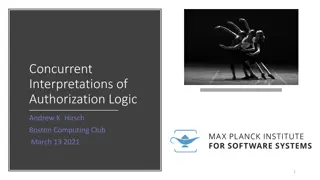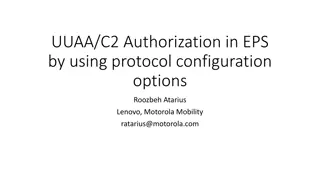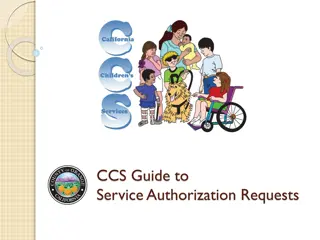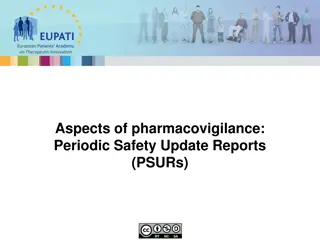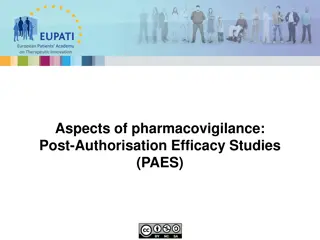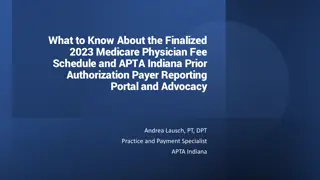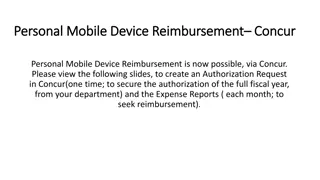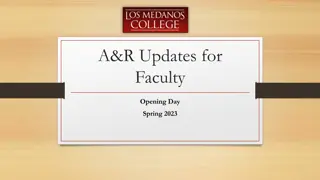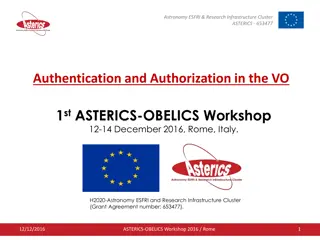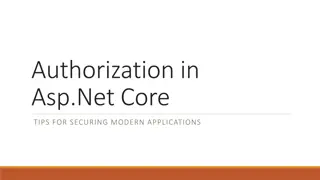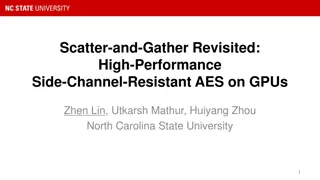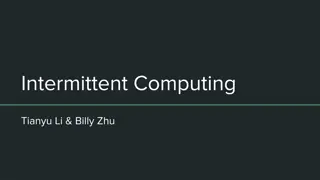Enhancing Authorization in Alpaca: A Decade-old Approach Revisited
The research led by Chris Lesniewski-Laas et al. in 2007 proposed extensible proof-carrying authorization in Alpaca, addressing the challenges of authorization proliferation and introducing innovative solutions in logic-based authentication, bridging PKI gaps, and dynamic principals in PKI systems. The study explores PCA, logical formulas for requests, and Alpaca's techniques for checking foreign signatures and credentials. It highlights the advancements in proof-carrying authorization and its relevance in modern PKI frameworks.
Download Presentation

Please find below an Image/Link to download the presentation.
The content on the website is provided AS IS for your information and personal use only. It may not be sold, licensed, or shared on other websites without obtaining consent from the author. Download presentation by click this link. If you encounter any issues during the download, it is possible that the publisher has removed the file from their server.
E N D
Presentation Transcript
Extensible proof-carrying authorization in Alpaca October 31, 2007 ACM CCS Alexandria, VA Chris Lesniewski-Laas, Bryan Ford, Jacob Strauss, Robert Morris, and M. Frans Kaashoek MIT
Authorization proliferation Carol Peggy Peggy
Authorization proliferation MIT Carol Victor ? Peggy Peggy put( )
Authorization proliferation MIT Carol Victor Peggy@MIT Peggy Peggy put( ) put( )
Authorization proliferation MIT Carol Victor ? put( ) MIT! Peggy Peggy put( )
Solution approach MIT Carol Victor ? DSA for Dummies Peggy @MIT! Peggy How do we build this? Peggy put( )
Our system: Alpaca Logic-based authentication framework Bridges the gaps between PKIs Verifier doesn t know details of prover s PKI Carol Victor put( ) DSA for Dummies put(x) put(x) DSA for Dummies put(x) put(x) put( ) Peggy put( ) put( )
Proof-carrying authorization Appel, Felten. PCA. In CCS 1999 Requests are logical formulas Credentials are proofs of logical formulas flexible certificates, delegation policy Peggy Victor request: formula [Peggy says put( )] (says Peggy(apply put bytes )) credential: proof of [Peggy says put( )] (speaks-for-elim (axiom p.Kca p) ( ) ) (axiom p.Kca p) speaks-for-elim
Alpacas new techniques Dynamic principals defined by logical rules Signatures built from more elementary primitives Enables Victor s Alpaca PKI to check foreign signatures and credentials Peggy Victor request: formula [Peggy says put( )] (says Peggy(apply put bytes )) Peggy credential: proof of [Peggy says put( )] (speaks-for-elim (axiom p.Kca p) ( ) )
Principals are name chains A/N/M Built-in authorities emit statements defined by axiom schema e.g., math authority: emit 1+1=2, 23mod 7 = 1, math mathsays 1+1=2 (axiom math (= (+ 1 1) 2)) Name (role) connective A/N A is a principal, Nis a name ( Peggy , 0x96, tuple) Proof checker rule: A speaks for A/N A controls all principals A/N/M/ (A s sandbox )
Bootstrap familiar principals Built-in authorities Name (role) connective A/B Bootstrap other principal types Public key Ka (emits statements signed by Ka) User name ( Peggy ) Compound names ( localname@domain.com , Dad s dentist , ) others (see paper)
Key principals defined by rsa authority Goal: if Kn,e is an RSA key, and Kn,e-1 signs repr[?], then can construct proof of [Kn,esays?].
Key principals defined by rsa authority Goal: if Kn,e is an RSA key, and Kn,e-1 signs repr[?], then can prove [Kn,esays?]. Principal Kn,e expression rsa/n,e (/ rsa (cons 0x8f1f 0x10001)) rsa authority contains one axiom*: e = ? (mod n) iff RSA-Verify(?, Kn,e, ) uses [rsa rsa/n,e] rsa says ( e = ? (mod n)) rsa/n,e says? Goal rsa/n,e says?
Credential = signature + proof tree Peggy Victor Kpsays put( ) proof of [Kpsays put( )] Compute: ? = repr [ put( ) ] = ?1/e mod n Compose proof tree: axiom [mathsays e ? (mod n)] + axiom [rsa says( e ? (mod n)) rsa/n,e says?] + substitute? = repr [ put( ) ] + implies-eliminate, = proof of: [rsa/n,e says put( )] Checks axioms and proof steps [rsa/n,e says put( )]
Bootstrap other crypto from RSA Built-in authority (?e = ? (mod n)) says? rsa says rsa/n,e says (r = g?/syr/s (mod p)) dsa/p,q,g,y says? dsa rsa/n,e says (r = g?/syr/s (mod p)) rsa/n,e/p,q,g,y says? Signed statement: meta-credential rsa/n,e dsa Not everyone uses RSA signatures Victor doesn t want all algorithms in TCB rsa/n,e: could be Kcarol or anyone else Bootstrap from one-time-pad authenticator Victor starts with just OTP
Certificates and CAs Goal: bind Peggy to Kp (attested by Kca) Using Kca-1, sign formula [Kp Kca/ Peggy ] Kpspeaks for Kca s name Peggy Proof is a certificate! Nothing special about Kca users or apps choose namespaces to use by, e.g., adopting axioms x. Kca/x Kuser/x
Credential = signature + certificate + proof tree Peggy Carol Victor Kca/ Peggy says put( ) proof of [Kca/ Peggy says put( )] Compute: ? = repr [Kca/ Peggy says put( )] = ?1/e mod n Compose proof tree: Incorporate RSA signature proof subproof of: [Kpsays Kca/ Peggy says put( )] + subproof of: [Kp Kca/ Peggy ] + speaks-for-rule, = proof of: [Kca/ Peggy says put( )] [rsa/n,eca/ Peggy says put( )] Checks axioms and proof steps
Policy in the logic: authorization Can roll access control into logic ACL entries could be ( Kca/ Peggy says put(x) ) put(x) Requires Peggy to prove [put( )]: First prove [Kca/ Peggy says put( )] Then combine with ACL (or other policy logic) to get [put( )] See, e.g., DCC [Abadi 2006] for variations
Credential = signature + certificate + policy + proof tree Peggy Victor put( ) proof of [put( )] Compute: ? = repr [Kca/ Peggy says put( )] = ?1/e mod n Compose proof tree: Blah blah blah [proof from some credential] + [maybe some axioms] + deductive rules, = proof of: [put( )] Checks axioms and proof steps [put( )]
Foreign credentials Alpaca: [Kca MIT ] Carol Victor X.509 for Dummies Peggy@MIT says to put( )! X.509 cert { CN= Peggy , RSAPK=(n,e) }Kca Peggy put( )
Alpaca can use foreign credentials Carol publishes X.509 meta-credential: Kcasays x509 : str. signed( Kca, x509 ) (n,e) = RSAPK(x509) name = CN(x509) rsa/n,e Kca/name Now Peggy can present X.509 cert to Victor What if MIT uses DSA certificates?
Alpaca can use foreign credentials Carol publishes X.509 meta-credential: Kcasays x509 : str. signed( Kca, x509 ) (p,q,g,y) = DSAPK(x509) name = CN(x509) Kca/dsa/p,q,g,y Kca/name not built-in authority + DSA meta-credential: Kcasays (r = g?/syr/s (mod p)) Kca/dsa/p,q,g,y says? Now Peggy can present X.509 cert to Victor using DSA private key to sign requests
Other cool things Alpaca can do Policy restricted delegation conjunctive/disjunctive principals flexible quota assignment policies PKI namespace structures (SPKI, hash-IDs, ) Enabling incremental improvements encoding (padding, batching, hash chains, ) vanilla SHA, RSA wizzbang new crypto (IBE, ) secure root of trust for updates: one-time MAC
Implementation features (in paper) Python library and API 3500 non-blank LOC (TCB: 800 LOC) Proof construction language Efficient sandboxed computations Hashing as fast as native evaluation Replay protection (nonces) Integrated with UIA name system
Future directions What s nice about Alpaca right now? Apps can say new things with logic Flexibly specify who holds credential and delimit what they can do with it What s still to do? Meta-credentials need to be self-describing How to use this credential? Why is this credential valid?
Related work Proof-carrying (authorization|code) Logic of authorization (BAN, TAOS, ABLP, DCC) Decentralized PKI (SPKI/SDSI) Mobile code (Active certificates) Policy languages (SecPAL, Binder, Daisy, SD3, RT, )
Summary Alpaca: a logic-based authorization framework introduces dynamic principals decentralizes definition of authorization rules extensible PKI, signatures, hashes, credentials flexible delegation and access control policy Make logic an explicit part of wire protocols request :: formula, credential :: proof enables incremental improvement of PKI http://pdos.csail.mit.edu/alpaca/







